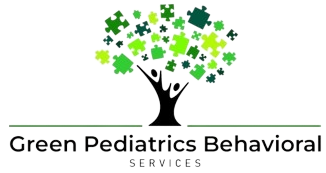Autism Spectrum Disorder (ASD) presents a diverse range of challenges and strengths in individuals, starting at a young age. Autism makes it important for parents to navigate the complicated landscape of treatments effectively. This comprehensive guide helps in educating about evidence-based practices and innovative approaches to counter Autism, providing parents with a roadmap for informed decision-making tailored to their child’s unique needs.
Is Autism Common?
As per research, 1% of the world population suffers from Autism, although a lot of people don’t understand what Autism is.
Read More: Everything you need to know about Autism
Some experts say that with time, the reported cases of autism increased, especially in the 21st century, to which some experts argue that over time, more people got informed about what Autism is, and more parents got their children tested, explaining the rise of reported autism cases.
Does ABA Therapy Help?
ABA therapy is a set of techniques applied to children with Autism. It is an evidence-based therapy that is known to have a sound impact on the behaviors of children with autism. Learn about the pros and cons of ABA therapy.
What Do Autism Services Include?
To help a child with Autism, the following services are crucial and need to be included:
I. Building a Foundation: Scientific Understanding of Autism
It is very important that parents understand the neurological basis of Autism. It is crucial to study Autism in-depth, explore the research findings, and grasp the emerging trends in Autism to have a proper solid foundation of Autism.

This allows a more empathetic and informed approach to intervention techniques.
II. Behavioral Interventions: ABA and Beyond
- Applied Behavior Analysis (ABA): It is important to explore the dimensions of ABA therapy and its adaptability to various age groups and levels of skills. Exploration of recent case studies is important to showcase the transformative impact of ABA therapy on behavior, social interaction, and language development.
- Pivotal Response Training (PRT): Investigate the subtle strategies of PRT and focus on pivotal behaviors that influence overall development significantly. Look at real-life success stories represent how PRT can enhance social communications, and build meaningful connections with peers and caretakers.
- Positive Behavior Support (PBS): Learn the philosophy of PBS, and emphasize the proactive strategies to address challenging behaviors. Know the collective role of parents, educators, and therapists in developing supportive environments that encourage positive behavior patterns.
III. Educational Strategies: Tailoring Learning to Individual Needs
- Individualized Education Plans (IEPs): Navigate how complex IEP is, and understand how personalized educational goals can help maximize a child’s potential.
- Incorporating Technology in Education: Explore innovative educational technologies designed for children with autism. From interactive educational apps to virtual classNamerooms, discover how technology encourages engaging and accessible learning experiences.
- Social Skills Training: Recognize the importance of social skills training in enhancing interactions with peers and community integration. Explore structured social skills programs and community-based activities customized to age-appropriate socialization goals.

IV. Biomedical Interventions: Separating Fact from Fiction
- Genetic and Neurological Research: Research about cutting-edge genetic and neurological studies. Explore the latest news and breakthroughs in understanding Autism’s genetic basis. Discuss the potential implications for personalized treatments based on genetic profiles.
- Nutritional Interventions: Investigate the effect of balanced nutrition on the symptoms of autism. Explore dietary interventions supported by scientific research and emphasize the role of essential nutrients in cognitive development and overall well-being.
- Alternative Therapies: Find alternative therapies such as acupuncture, hyperbaric oxygen therapy, and chiropractic interventions. Evaluate new research findings and acknowledge both promising outcomes and areas requiring further investigation.
V. Technological Innovations: Enhancing Communication and Learning
- Augmentative and Alternative Communication (AAC) Devices: Look into AAC tools, from simple picture boards to advanced speech-generating devices. Discuss their role in facilitating expressive communication for individuals who are not vocal or verbal, and empower them to convey their thoughts and emotions effectively.
- Virtual Reality (VR) Therapy: Get comfortable with and add VR therapy to autism interventions. VR applications targeting social skills and sensory integration can play a crucial part in anxiety management. Real-world case studies illustrate the immersive and engaging nature of VR therapy sessions.
- Telehealth Services: Study the emerging telehealth services and provide remote access to specialized autism interventions. Understand the benefits of telehealth to increase accessibility and have personalized therapy sessions.
VI. Holistic Approaches: Integrating Mind and Body
- Mindfulness and Relaxation Techniques: Explore mindfulness practices that can be used to help individuals with autism. Discuss relaxation techniques, meditation, and sensory-based activities promoting emotional regulation and stress reduction.
- Physical Fitness and Sensory Integration: Emphasize the importance of physical fitness made specifically to help with sensory sensitivities. Discuss sensory-friendly exercises, adaptive sports programs, and yoga sessions designed to enhance coordination, balance, and overall well-being.
- Art and Music Therapy: Recognize the therapeutic potential of art and music therapy in autism interventions. Explore creative expression as a means of communication, emotional release, and self-discovery. Real-life testimonials underscore the intense impact of artistic outlets on individuals with autism.
Conclusion: Empowering Parents for Informed Decision-Making
When it comes to Autism treatments, parents serve as advocates, nurturers, and decision-makers. Armed with comprehensive knowledge spanning behavioral interventions, educational strategies, biomedical research, technological innovations, and holistic approaches, parents can make informed choices aligned with their child’s unique strengths and challenges.

By including a collaborative relationship with healthcare professionals, educators, and therapists, parents become empowered, guiding their children toward fulfilling lives full of meaningful interactions, continuous learning, and boundless possibilities.
Remember, within every challenge lies an opportunity for growth, and by navigating the path of autism treatments, parents pave the way for their children to thrive with their decisions.
